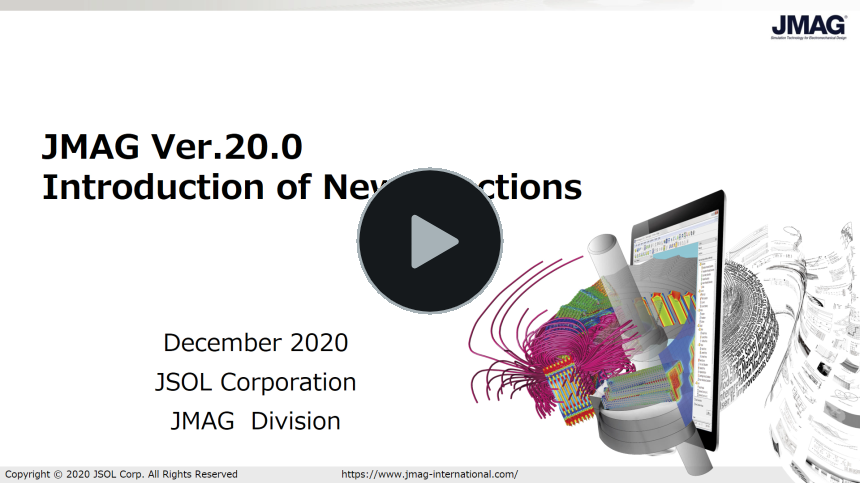A video complete with voice audio has been prepared to offer our users a better understanding of the new functions in JMAG-Designer Ver.20.0.
This will also include demonstrations using JMAG-Designer Ver.20.0 itself.
Demonstration data can be downloaded from JMAG function tutorials.
We encourage all of our users to take a look for themselves to experience these offers firsthand.
*This is a lecture that can be attended via internet in your own time and for as many times as required.
What is JMAG-Designer Ver.20.0 ?
- Analysis Parameter View / Dashboard
Model geometry, circuits, and windings can all be confirmed within a single screen. Analyzing phenomena is now possible by arranging the physical quantities of causal relationships. - Coil Templates
Arbitrary winding methods, such as coil pitch at irregular intervals, can now be specified. - Parallel Computing
Calculations have been sped up even further for models that are at a scale of elements ranging in numbers from several hundred million to tens of millions of elements. - GPU Solver
Speeds up many calculations, including circuit calculation, in a stable manner. - Functions Accounting for AC Copper Loss (Efficiency Map: Speed Priority Mode)
Improved accuracy in estimating motor efficiency in the initial stages of design can be achieved. - Magnetic Field and Structural Two-Way Coupled Analysis
Vibration can be estimated at a high accuracy in consideration of the interaction between electromagnetic force and structural deformation. - Topology Optimization (NGnet)
Topology optimization using NGnet supports coupled analysis. This expands the range of applicable applications, such as induction heating.
Other additions and improvements beside these have also been added.
– Introducing JMAG-Designer Ver.20.0
– Module download ( user verification required )



